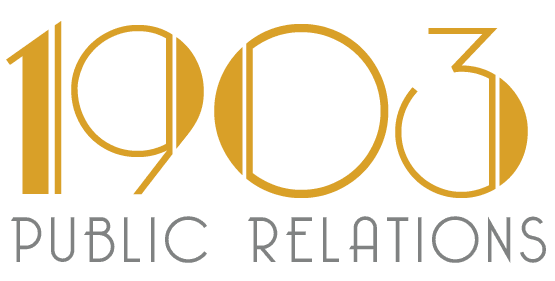By: Grace Decicco, 1903 Public Relations
Journalism, like all industries, has been transformed by the digital revolution. In the past few years social media, Web 3.0, 24/7 online news cycles have impacted both media professionals and the companies who work with them alike. Recognizing the challenges today’s journalists face can help your business effectively adapt and secure media coverage despite the rapid changes.
The State Of The Journalism Industry
So far, 17,436 reporters have been laid off in 2023. This has reduced the pool of journalists available to cover stories and slimmed down already thin newsrooms. With fewer journalists in the game, 39% of them are still receiving six or more pitches each day. Some even claim they receive up to 500 pitches daily!
To cope with the sheer number of pitches they receive, journalists must be selective in their process and how they filter through what they will give attention to. Knowing this makes it easy to understand why only about 3% of pitches receive a response. To stand out, it is vital that companies construct a unique/compelling, and sometimes even controversial angle.
One of the biggest benefits of hiring a PR team is that they are tuned into the news cycle and can weave clients’ announcements around compelling stories, relevant to what reporters want to cover. A PR team can find the best options to garner the outcomes and can add the right ingredients that will make your news stand out from email, to published story. But whether you are bootstrapping your announcement or having an internal comms person lead the initiative, there are some key aspects to consider.
The Process Of Storytelling
Creating an engaging narrative is a time consuming endeavor. Journalists often work on multiple stories at one time so these stories can start to overlap. While your PR team works diligently to arrange and facilitate conversations, journalists are also investing their own time in creating questions, recording dialogue and sculpting a compelling story based.
The writing itself process is an involved one that includes layers of research, editing, writing, rewriting, refining and polishing a story to meet editorial standards and current reader trends. From the moment a reporter engages with you on a possible story, they are seeking to write the best, most interesting story. Their livelihood depends on advertising, subscriptions and clicks. If their stories aren’t generating these actions from readers, they will soon be out of a job.
Then there is the need for their stories to be fresh. Not only does the writing/editing process take an enormous amount of time, but journalists are also usually working on tight deadlines. More than 57% of journalists rely on PR professionals for data and expert sources to complete their stories quickly. It is crucial for companies to be able to respond swiftly and accurately with any additional information requested in order to not hold up the process. Your PR team will help relay information between you and journalists, but being too slow, hesitant or guarded when providing additional information could result in the story getting pushed out or cut entirely. Always be prepared to follow up with a reporter in near real-time until the story is published.
Adjust Expectations: Reporters Don’t Work For You and This Isn’t An Advertisement
In an environment marked by rapid deadlines and high-pressure demands, managing patience and setting clear expectations is essential for companies working with journalists. With 30% of reporters submitting 10 or more stories a week, it is important to acknowledge that your story is just one of many on their radar. Constantly following up on coverage can only hinder the process and potentially impact how they write your story. In some cases they could decide your pestering isn’t worth the hassle and pull your story all together. Fostering a respectful and cooperative relationship can ultimately lead to mutually beneficial partnerships, continued coverage and prolonged relationships.
Earned PR does not have a direct paid relationship with a journalist and should not be treated as such. You are unlikely to have direct access to the publication’s analytics on how many people viewed an article. Many publications charge upwards of $6,000 – $150,000 depending on the tier publication and its reach for this information; they aren’t going to give it to a story source for free. It’s important to recognize that if it’s an earned opportunity, you/your company are not paying so being respectful is key. Recognize that this is a mutually beneficial interaction, but that the journalist has more control over what they write and if they publish. Set your expectations, lightly push, but never be demanding, aggressive, or disrespectful. That serves no one and ultimately ruins relationships and future opportunities.
Navigating the ever-changing media landscape requires a deeper understanding of the challenges journalists face. PR professionals will help manage relationships between yourself and journalists so that they see you as a trustworthy, reliable source for future stories. Journalists need people to deliver on their specific beat and help them maintain their deadlines. Keep in mind that reputations are built slowly and can crumble quickly, and this is very true when working with reporters. By hiring a PR team and following their recommendations your company can develop strong media relationships that lift its profile.
Schedule a Meeting Today

